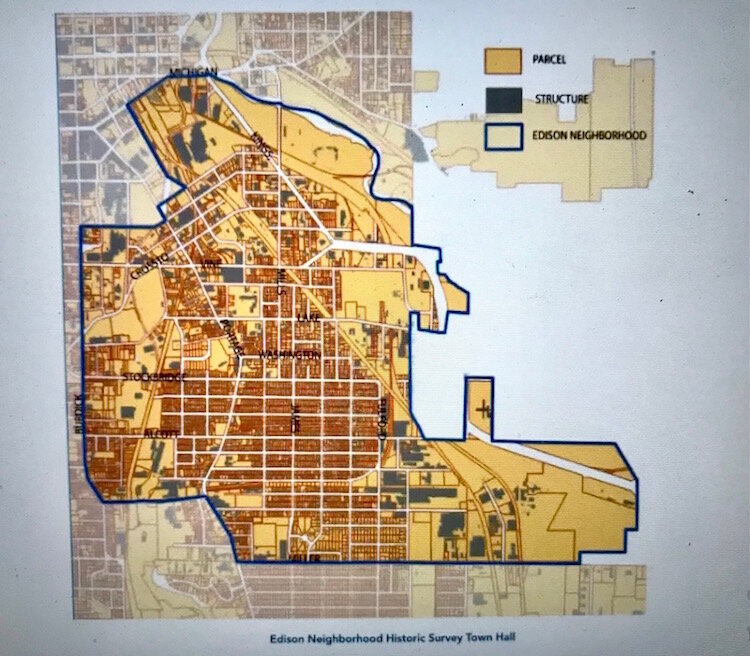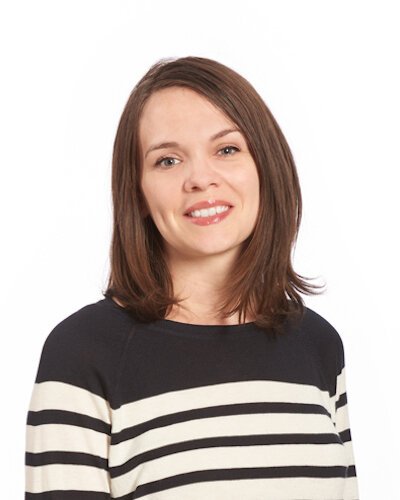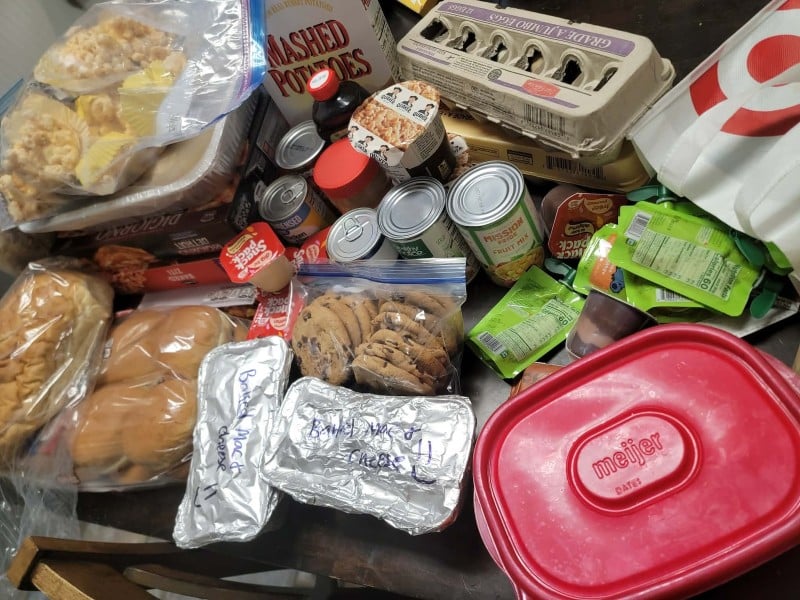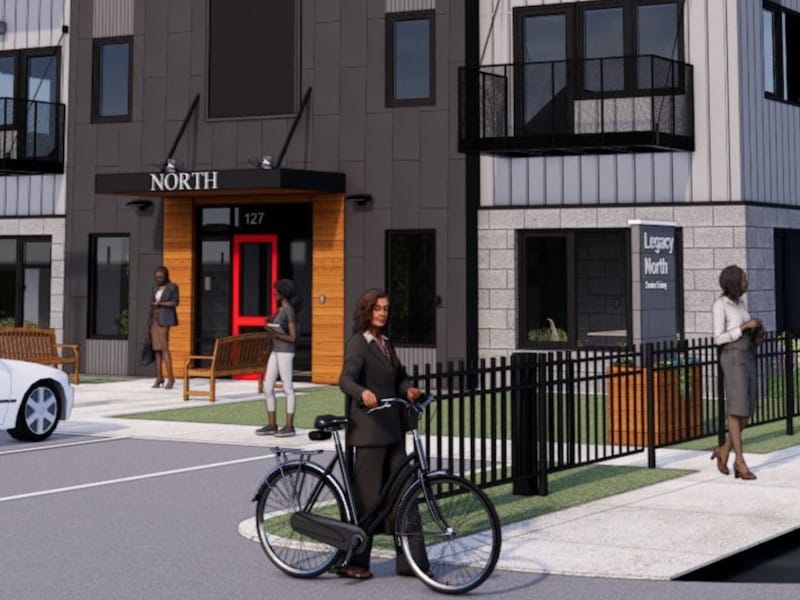Historic survey of Edison means a look at every house in Kalamazoo’s largest neighborhood
As a historical survey of the Edison Neighborhood gets underway residents can expect to see surveyors taking pictures of every house and commercial building in the area.
Editor’s note: This story is part of Southwest Michigan Second Wave’s On the Ground Edison series.
Any house and commercial property in the Edison Neighborhood that can be seen from the street will be photographed and inventoried this spring as a team works with the City of Kalamazoo to do a historic resource survey of the neighborhood.
As such, the city’s largest neighborhood will be the first of its many neighborhoods to be surveyed as part of a city-wide historic resource survey called Inventory Kalamazoo 2022. Half are set to be surveyed this spring and half in the fall.
The surveying effort was explained during a virtual town hall meeting Thursday evening (April 1) live-stream on the city’s YouTube channel and FaceBook page using the Zoom digital meeting platform.

“They chose the Edison Neighborhood because of its wonderful diversity in types of buildings,” Sharon Ferraro, said of the Michigan State Historic Preservation Office asking Kalamazoo to do the survey.
Referring to its historic significance, Ferraro, who is the historic preservation coordinator for the City of Kalamazoo, said, “So much of it is still there. Some of our factories are there. The homes are there. There’s at least one, if not two, Sears kit houses. There are two schools. There are churches that are active. Churches that have passed from one congregation to another. There’s a lot of continuity in Edison and I think it’s going to be a very rich story when these folks get around to telling it for us.”
Ferraro led the town hall meeting, working with Lillian Candela, an architect and architectural historian with Kraemer Design Group; Cassandra Talley, an architectural historian with Kraemer Design Group; and Brian Rebain, a principal with Kraemer Design Group.
The 25-year-old, Detroit-based design group is set to do the research, fieldwork, and evaluation necessary to produce what is called a reconnaissance level historic resource survey of Edison. Its work will be compiled in a final report and presented this summer at another town hall meeting.
Candela described the survey as “a baseline level” of documenting the neighborhood.
“We’re not necessarily doing intensive archival research on any one specific area or building,” she said. “We’re sort of laying the groundwork and getting a baseline history of what’s in the neighborhood currently.”
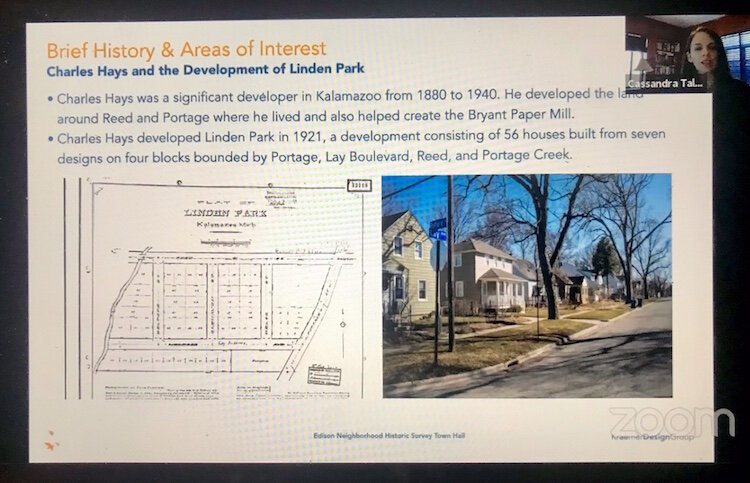
During the fieldwork, neighborhood residents can expect to see surveyors taking pictures of every house and commercial building in the area. Those workers may be driving slowly in a car and taking photos, or walking in pairs taking photos with a phone or tablet, and entering data using an app called Survey 123. They will be clad in yellow vests and they will stay in the public right of way, Candela said. They will not ask for access to private property, she said.
A survey of the historic buildings and resources in each of the city’s neighborhoods, including an evaluation of their condition, is required by the City’s 2025 Master Plan. The Edison Neighborhood survey will be very large, covering 3,500 properties.
Candela said, “It covers many different types of properties — dense residential areas, industrial areas, and a lot of commercial corridors. So we’re really sort of excited about the diversity of the buildings that are found in this neighborhood.”
The Edison Neighborhood is just south and east of downtown Kalamazoo, with Portage Street as its largest traffic artery. It is bordered on the south by Miller Road and on the west by Burdick Street. With lines that rival the shape of a jigsaw puzzle, its northern border includes a few blocks of Michigan Avenue and its eastern border is the Kalamazoo River and an industrial swarth of land that reaches Olmstead Road.
“We are specifically focusing on buildings that are over 40 years of age,” Candela said, “We’re looking at buildings that could be deemed historic or are historic. Those are the ones that we’re documenting more intensely than the rest.”
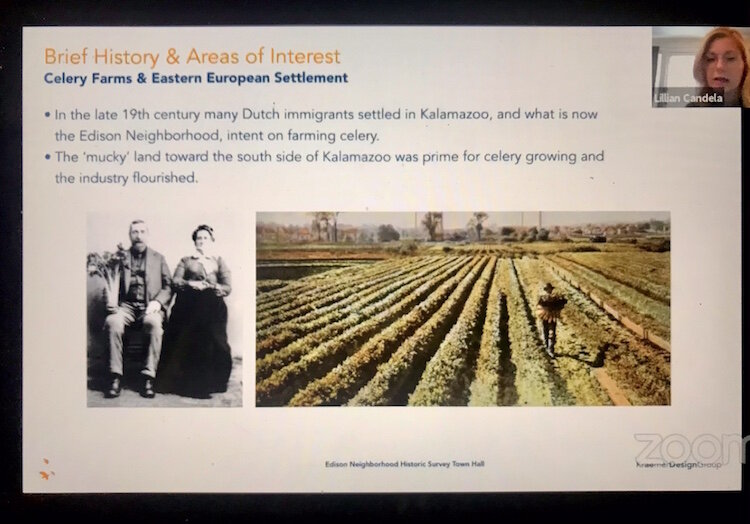
Among areas of historic interest for the survey will be evidence of the celery farms that were developed by Dutch immigrants during the late 19th century; the creation of the National Driving Park, a horse-racing and entertainment venue that took up about 64 acres of the neighborhood and was Kalamazoo’s fairgrounds from 1856 to 1893; and paper mills that took advantage of the neighborhood’s proximity to the Kalamazoo River and creeks, including the Bryant Paper Mill.
“One of the other areas of interest that we are looking to better understand and research as a part of this survey is Charles Hayes and the development of Linden Park,” Talley said.
Linden Park was a 56-home development that Hayes built in 1921 on four blocks bounded by Portage Street, Lay Boulevard, Reed Avenue, and Portage Creek.
“Probably one of the more important things I think Lillian (Candela) and I would both agree that we want to dive into, is the settlement patterns and the race and ethnicity history of the Edison Neighborhood,” Talley said. “In the early and mid-20th century, the Edison Neighborhood was one of the few areas of Kalamazoo where non-White residents were able to settle down. And we want to make sure we understand that history and document it.”
She said it contributes to the diverse makeup the community has today. The post-World War II housing boom also left its imprint on the neighborhood, she said, with a large number of homes built in the late 1940s and 1950s. That will be investigated and documented, she said.
“The survey doesn’t necessarily mean that the areas we recommend will become a historic district or go on the National Register (of Historic Places),” Talley said. “That isn’t really part of the process. It could be a result later on down the line. … We’re gathering, collating, and putting all this information together for the city, for the neighborhood association, and for the residents to explore the history and start planning and … use it as they need.”
The survey is made possible by a Certified Local Government Grant from the National Park Service. It is being administered by the Michigan State Historic Preservation Office.
The city-wide survey will be aided in 2021 and 2022 by volunteers who will help photograph and document the condition of every building in the city that is visible from the public right of way, according to information provided by the city. Part of it will be done concurrently with the Edison Neighborhood survey. Although the Kraemer Design Group will be completing the survey work in the Edison neighborhood, Edison residents interested in working as a volunteer surveyor for the city-wide project in other Kalamazoo neighborhoods can sign up here.
Talley and Candela invited people to share if they have special memories, photographs, or history of the neighborhood. Candela may be contacted at lillian.candela@thekraemeredge.com or 313-965-3399, ext. 220. Talley may be contacted at cassandra.talley@thekraemeredge.com or 313-965-3399, ext. 239.
Community residents were also invited to submit questions about the project by emailing hello@kalamazoocity.org





